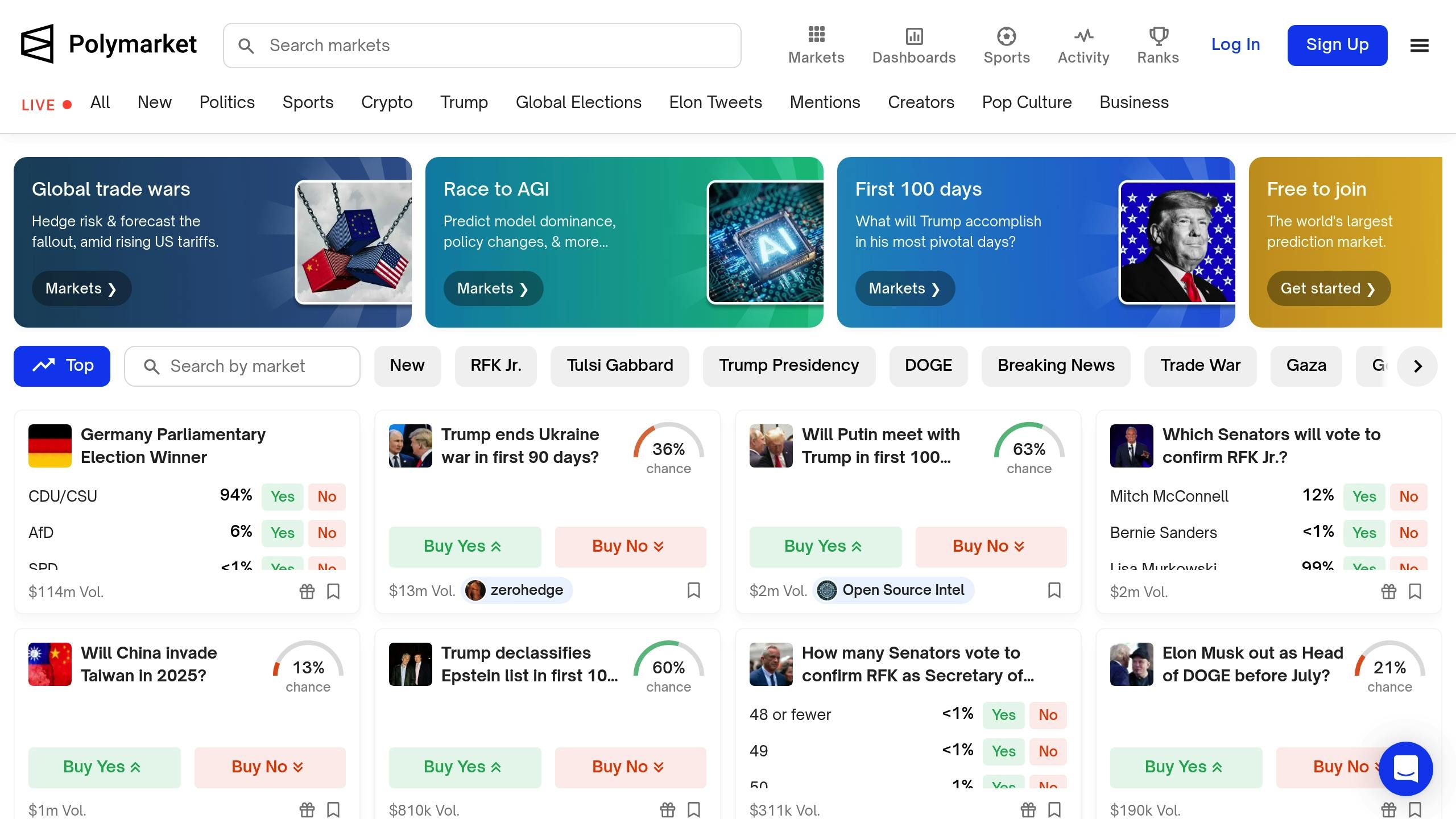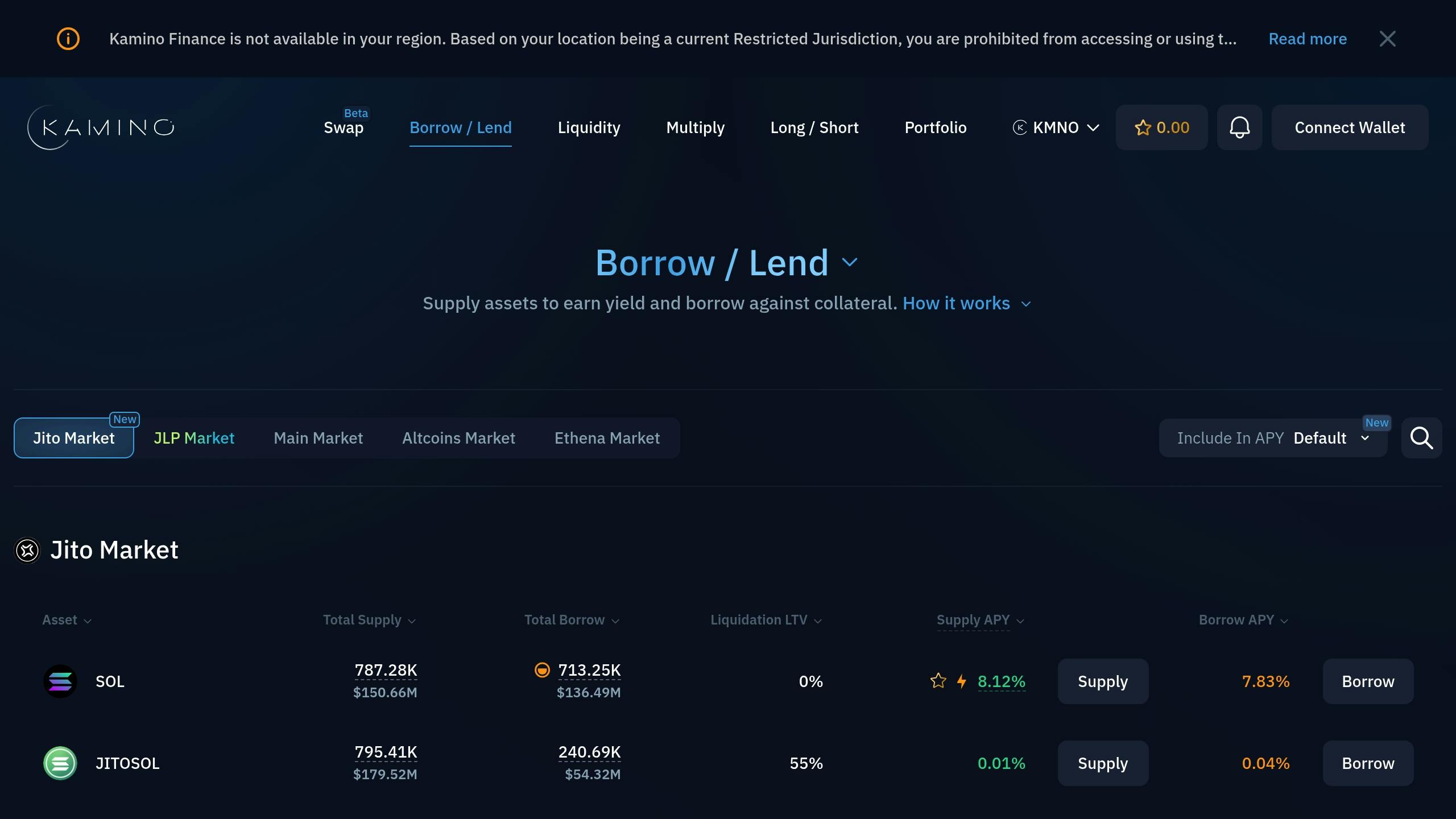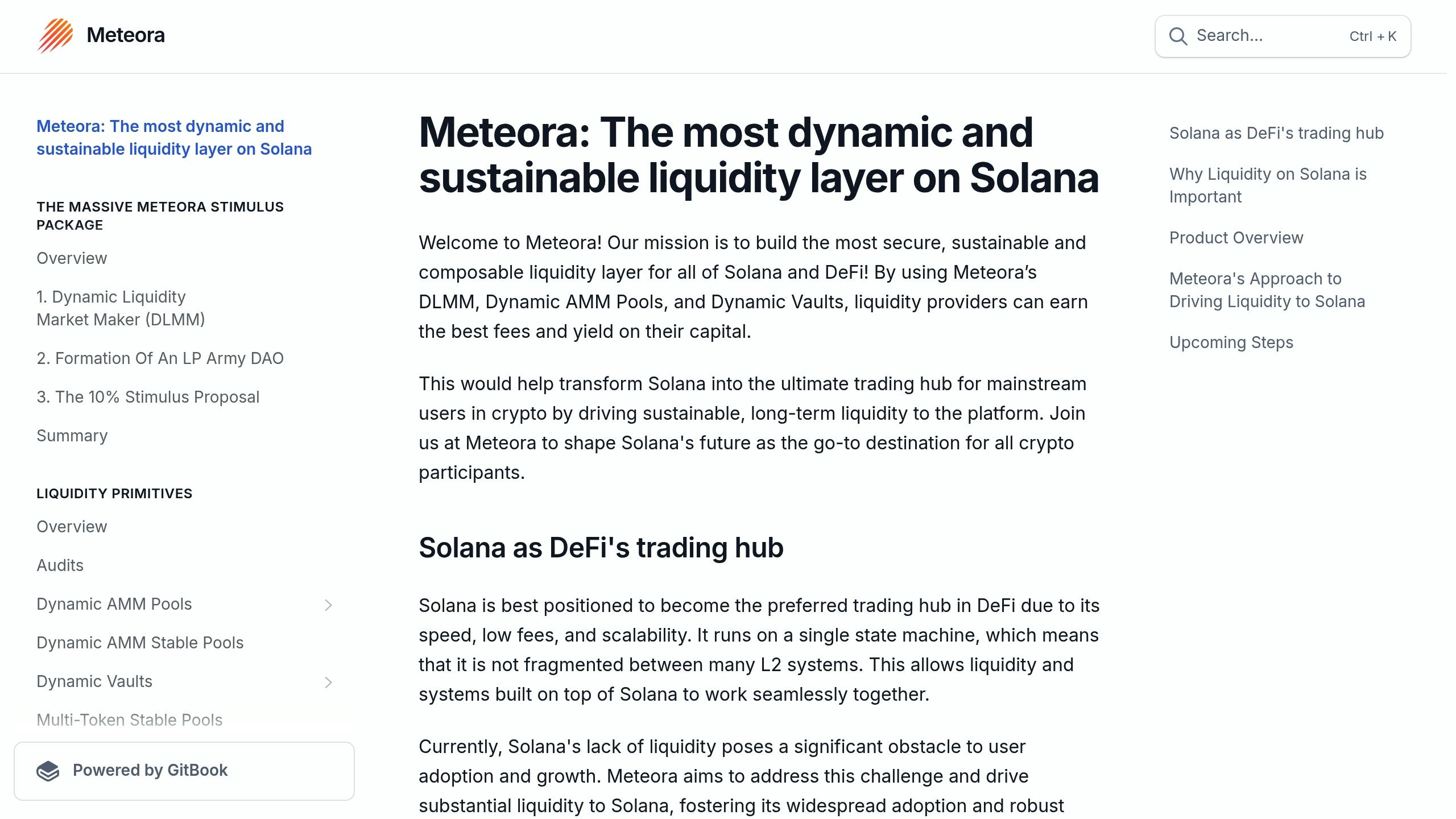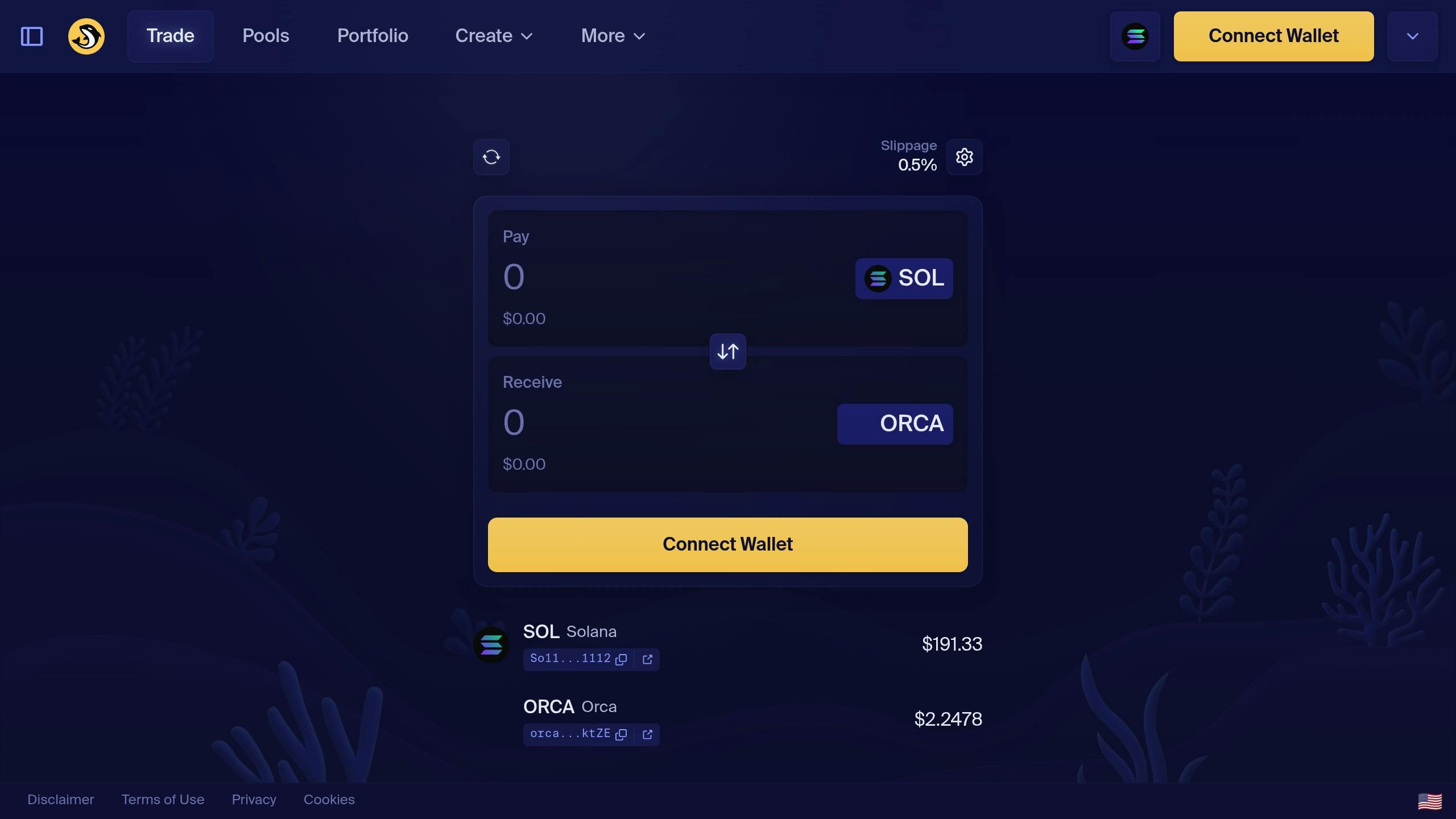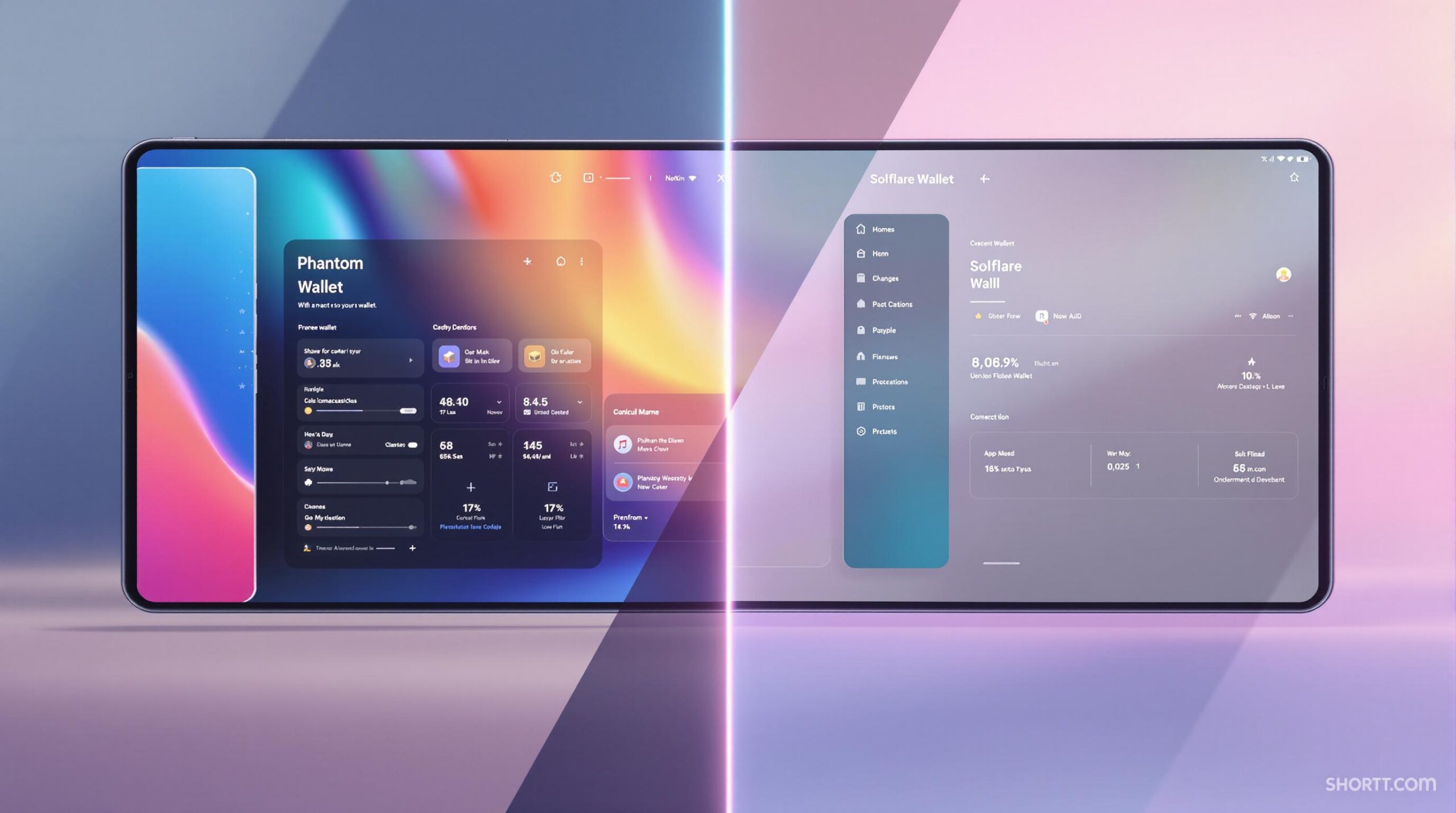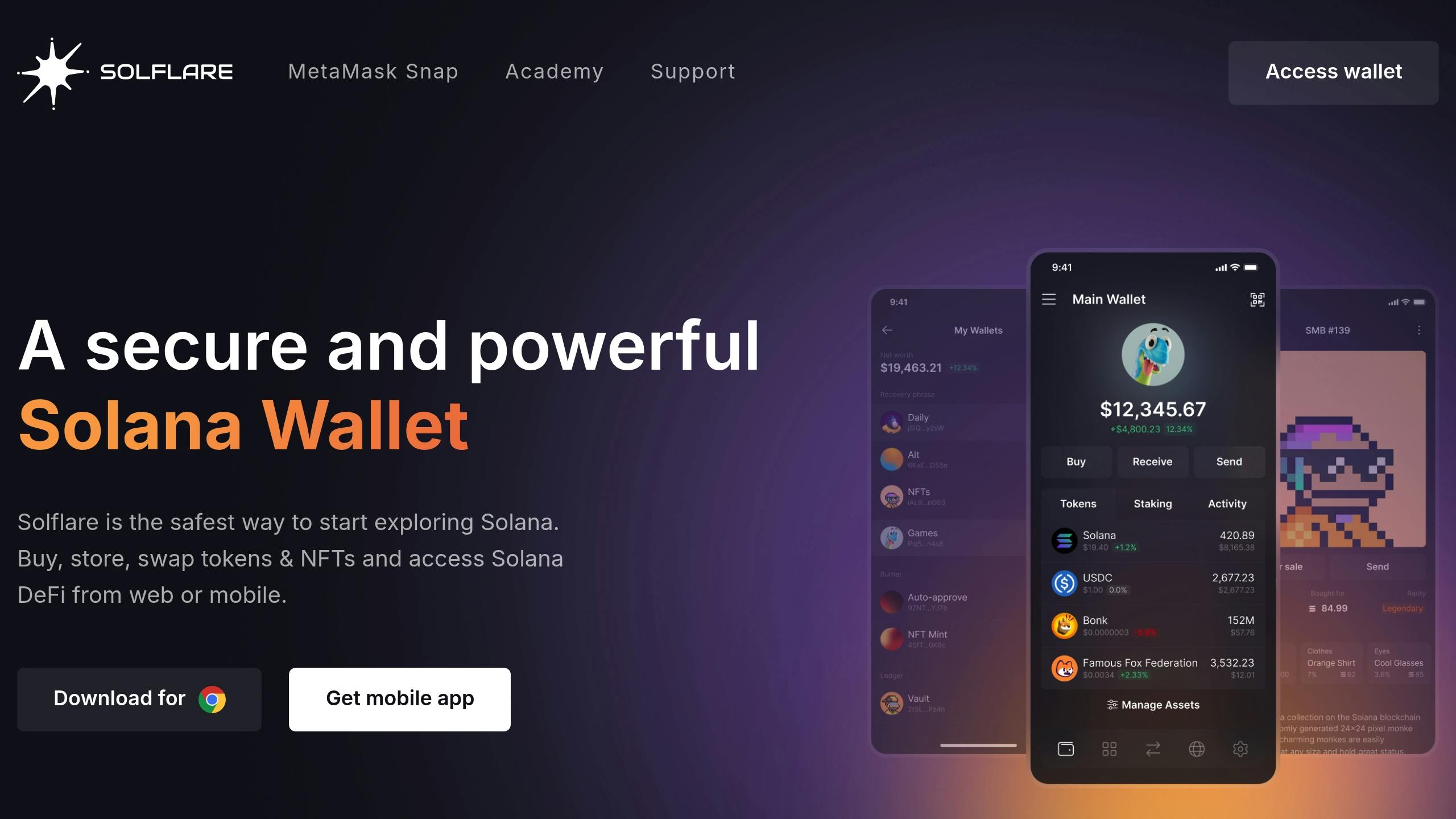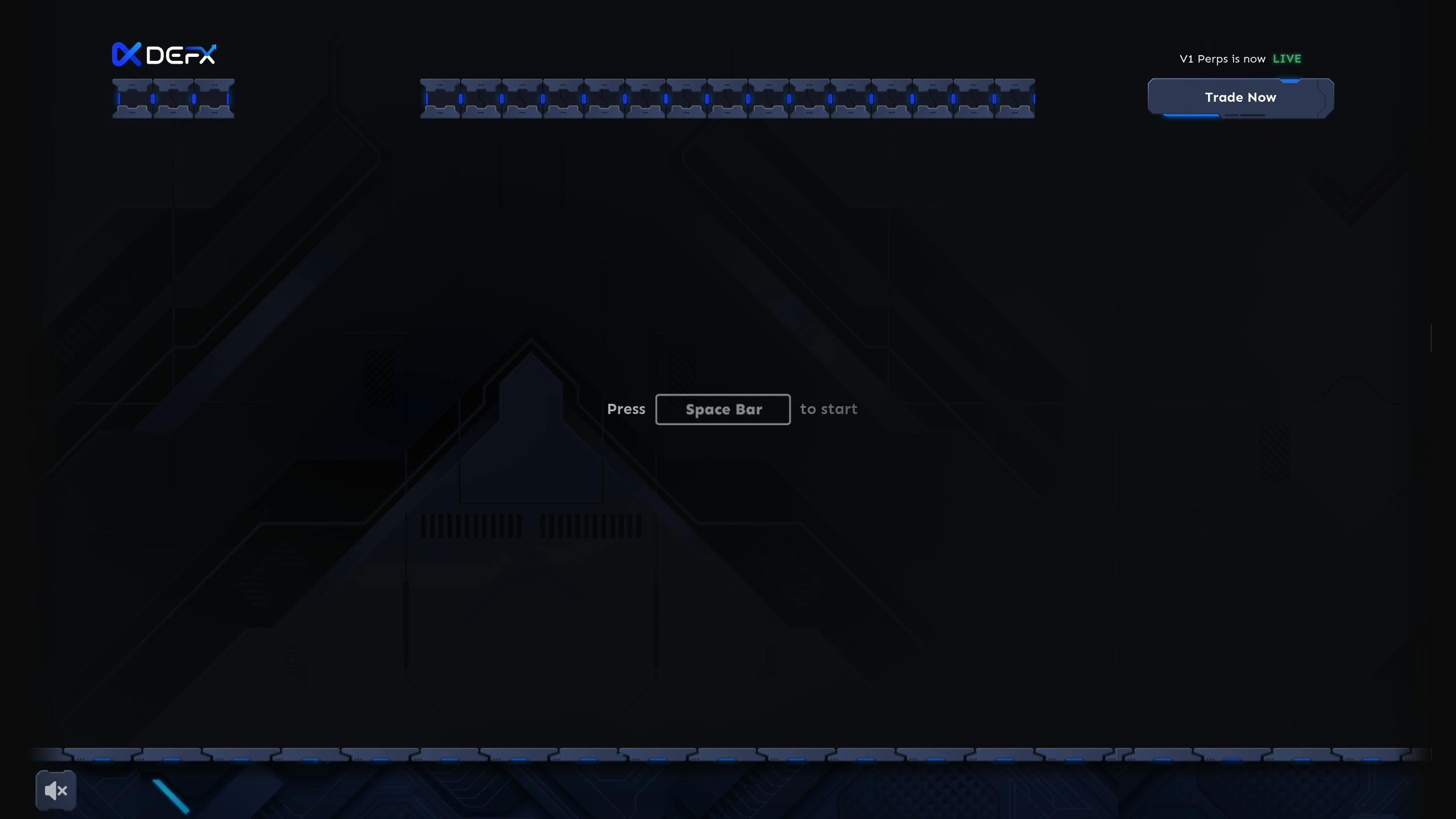Looking for the best hardware wallet in 2025? Here’s a quick breakdown of the top options based on security, features, and price:
- Ledger Flex: Best for tech-savvy users and DeFi enthusiasts. Features a 2.84" E Ink touchscreen, supports 5,500+ assets, and costs $249.
- ELLIPAL Titan: Prioritizes security with air-gapped technology and self-destruct features. Supports 10,000+ assets and is priced at $159.
- Cypherock X1: Unique seedless recovery system using Shamir’s Secret Sharing with NFC cards. Supports 1,500+ assets and costs $199.
- NGRAVE ZERO: Offers the highest security (EAL7 certification) and durable steel backups. Best for institutional investors, priced at $430.
Quick Comparison Table
| Wallet | Security Level | Display | Supported Assets | Price (2025) | Best For |
|---|---|---|---|---|---|
| Ledger Flex | CC EAL6+ | 2.84" E Ink | 5,500+ | $249 | Active traders, DeFi |
| ELLIPAL Titan | Air-gapped design | 4" touchscreen | 10,000+ | $159 | Security-focused users |
| Cypherock X1 | Shamir’s Secret Sharing | 3.5" touchscreen | 1,500+ | $199 | Long-term HODLers |
| NGRAVE ZERO | EAL7-certified | 4" touchscreen | 1,500+ | $430 | Institutional investors |
Each wallet caters to specific needs, from beginners to institutions. Read on to find the best one for you.
The BEST Cold Wallets for 2025
1. Ledger Flex
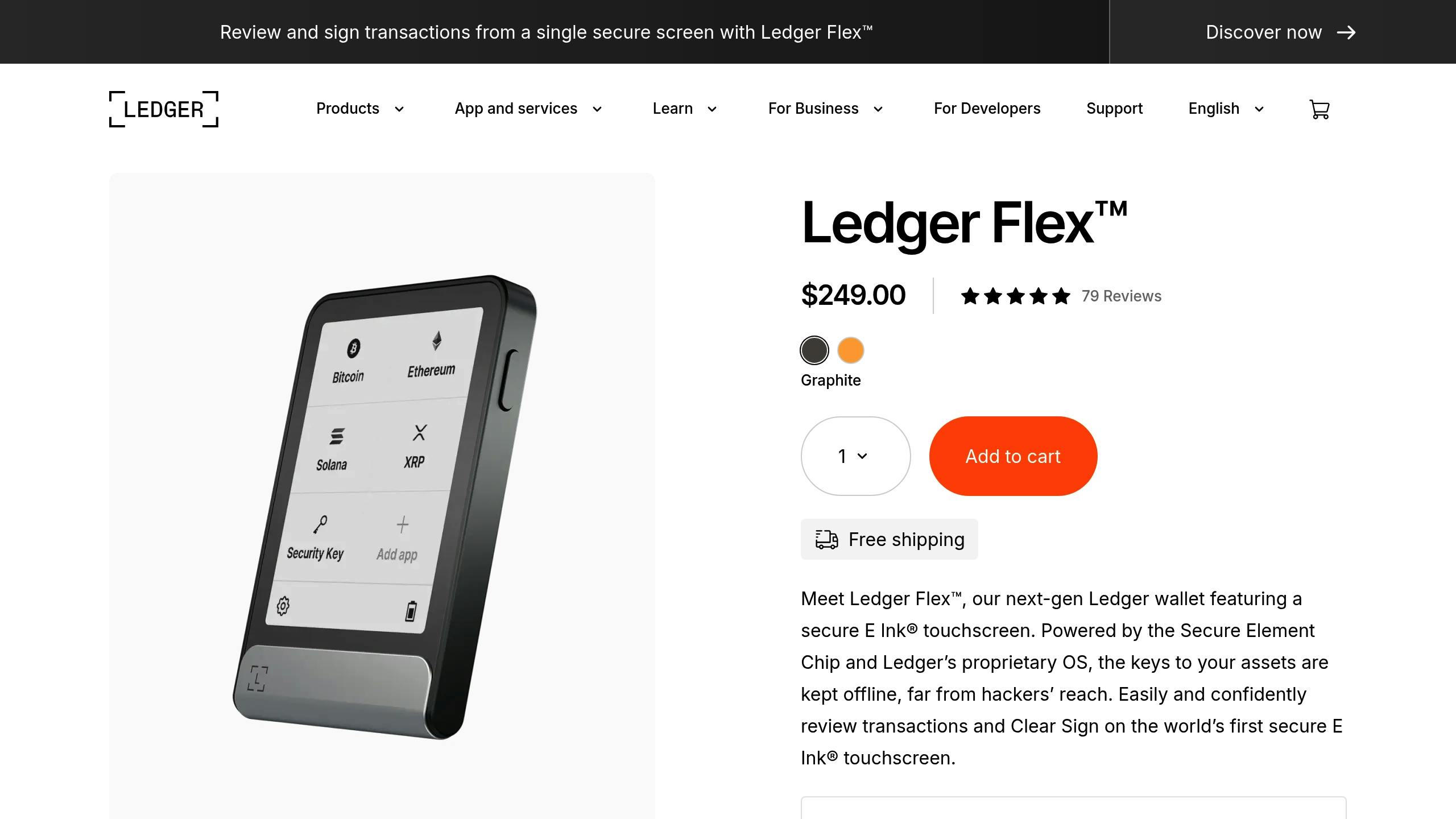
The Ledger Flex is a step forward in hardware wallet design, blending top-notch security with a focus on ease of use. Its 2.84-inch E Ink touchscreen stands out, offering better visibility and energy efficiency compared to older wallet models [9]. This design directly addresses key factors like security, asset variety, and user experience.
Supporting over 5,550 digital assets, the Flex caters to a wide range of investment needs [1]. It works with major cryptocurrencies, altcoins, and even NFTs, making it ideal for users managing diverse portfolios. The energy-efficient E Ink screen enhances the user experience while keeping the device secure by reducing its vulnerability to attacks.
| Feature Category | Details |
|---|---|
| Display | 2.84" E Ink® touchscreen (16 grayscale) |
| Connectivity | USB-C, Bluetooth, NFC |
| Build Material | Aluminum frame with plastic back cover |
| Price | $249 |
The Ledger Live app adds functionality by allowing users to track their portfolios and interact with DeFi platforms, all while keeping private keys offline. Multiple connectivity options – USB-C, Bluetooth, and NFC – ensure secure and convenient access to the wallet [9].
One standout feature is the ability to display NFTs even when the wallet is turned off [1]. This is especially useful for NFT traders who need both accessibility and strong security.
The Flex also integrates with protocols for yield farming and liquidity provision, combining advanced features with a strong security foundation [1][2]. This makes it a solid choice for users seeking both cutting-edge tools and dependable protection.
2. ELLIPAL Titan
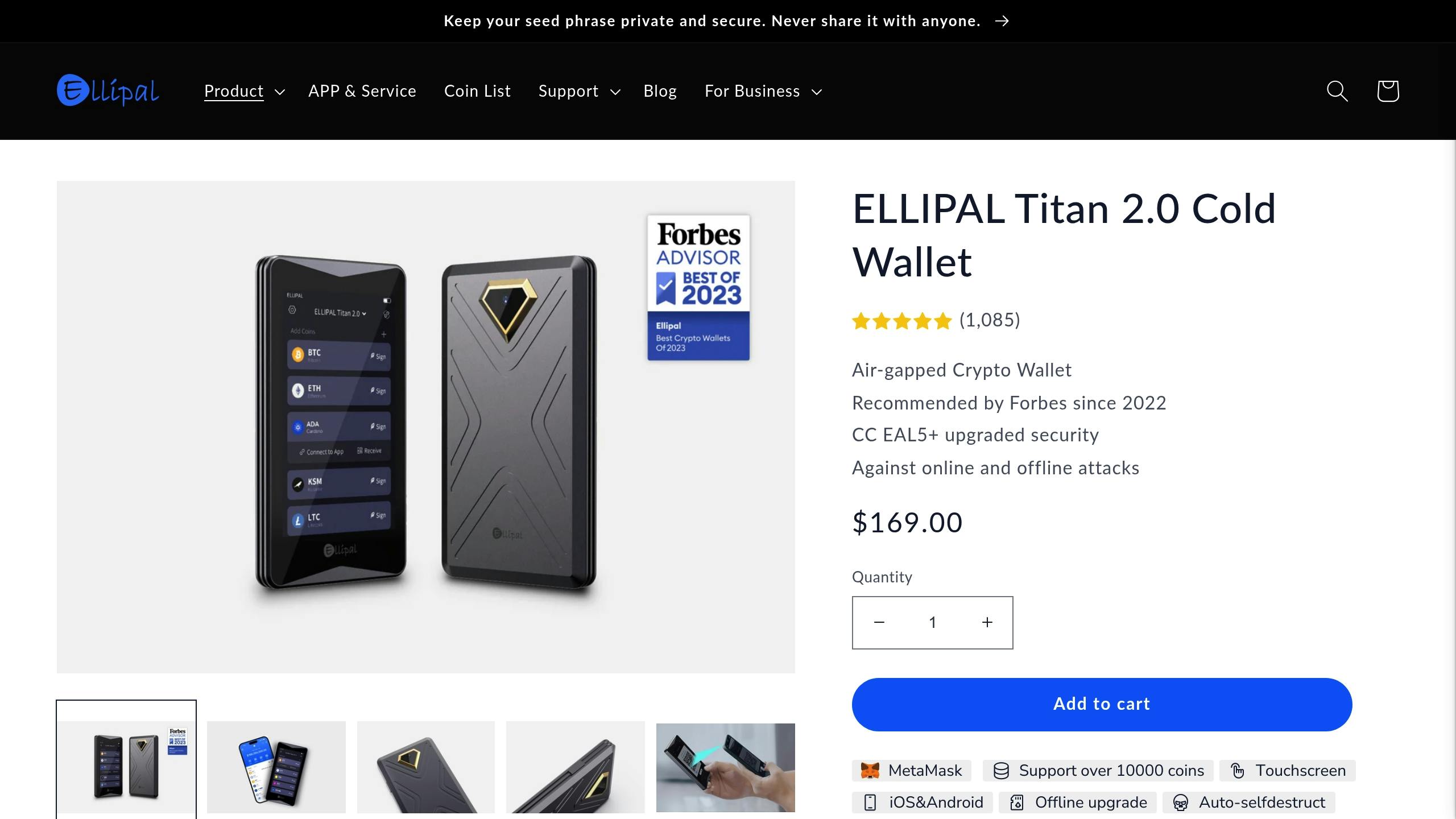
The ELLIPAL Titan stands out with its focus on air-gapped technology, emphasizing complete isolation from external connections. Unlike the Ledger Flex, it avoids USB, Bluetooth, Wi-Fi, or cellular connectivity entirely. Instead, it relies on QR codes to transfer data, keeping private keys offline and secure [2][7].
This hardware wallet has a 4-inch touchscreen display encased in a sturdy metal body, offering both durability and ease of use [2].
| Feature | Specification |
|---|---|
| Display | 4-inch touchscreen [7][11] |
| Dimensions | 118 x 66 x 9.7 mm [11] |
| Battery Life | Up to 14 days standby [11] |
| Supported Assets | Over 10,000 cryptocurrencies [1] |
| Price | $159 (2025) [11] |
One of its standout features is a built-in self-destruct mechanism that wipes all data if tampering is detected, making it a strong choice for individuals managing high-value assets [2]. The Titan also supports secure DeFi interactions by approving transactions through air-gapped QR codes.
The wallet’s interface is highly intuitive, comparable to modern smartphones [2], and includes a built-in cryptocurrency exchange for asset swaps within its ecosystem [10]. However, updates must be installed manually via an SD card, as the device doesn’t allow wireless patching [1].
The ELLIPAL Titan has earned a 4.5/5 rating from over 1,200 Amazon reviews as of February 2025 [8]. Its compatibility with Layer 2 solutions like Polygon and Optimism [10] ensures it stays relevant for blockchain scaling needs, aligning with the focus on future-proofing.
3. Cypherock X1
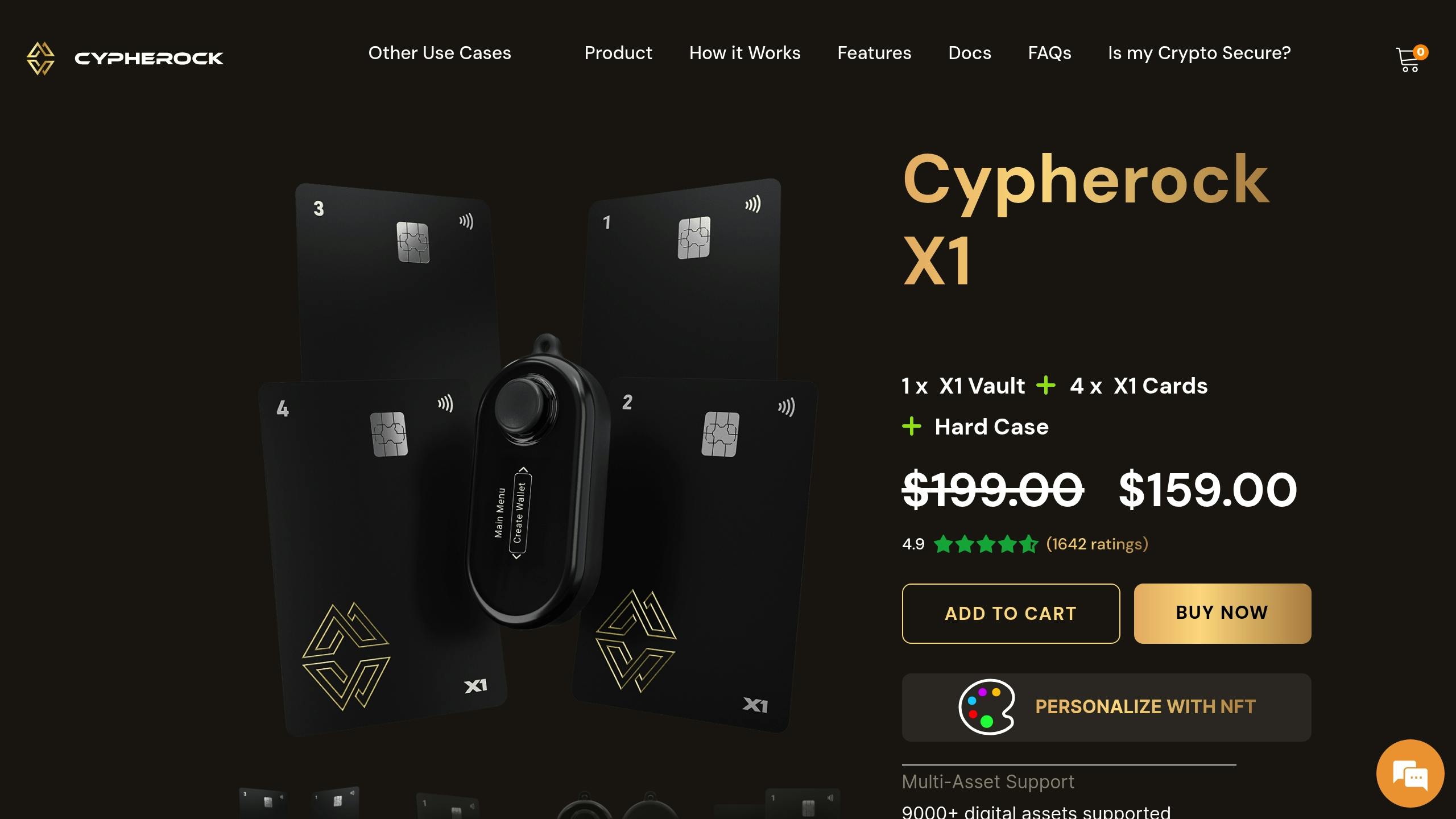
Cypherock X1 takes a different approach to crypto storage by completely removing the need for seed phrases, tackling a common weakness in key management. Instead, it uses the Shamir’s Secret Sharing (SSS) protocol to split private keys across four NFC cards. This design reduces the risk of a single point of failure while still allowing recovery through physical card combinations [6][7].
| Feature | Specification |
|---|---|
| Display | 3.5-inch touchscreen [2] |
| Supported Assets | 1,500+ cryptocurrencies [6][2] |
| Price | $199 (2025) [2] |
The device is built with EAL 5+ certified chips, NFC-based air-gapping, and hardware resistant to electromagnetic pulses. Unlike QR-based systems, it uses NFC card authentication for air-gapped security. Additional protections include AES-256 encryption and a casing designed to withstand physical tampering. Its EAL 5+ chip sets a high bar for commercial security [1][4].
For DeFi users, the Cypherock X1 integrates with WalletConnect, allowing secure interaction with decentralized exchanges while maintaining the benefits of cold storage [4][5]. The companion app uses QR codes for asset management, ensuring security remains intact [2][5]. An inheritance feature lets users assign beneficiaries for their digital assets, adding another layer of utility [1][4].
The card-based system is also forward-thinking, addressing potential regulatory needs for asset recovery solutions. Automatic security updates keep it aligned with the latest DeFi standards. However, its semi-open-source firmware has raised some transparency concerns, even though the device has undergone audit certifications [4].
sbb-itb-dd9e24a
4. NGRAVE ZERO

NGRAVE ZERO stands out in 2025 as one of the most secure wallets, boasting an EAL7 certification – the highest security rating in the industry [6][2].
| Feature | Specification |
|---|---|
| Display | 4-inch touchscreen [2] |
| Security Level | EAL7 certification [6][2] |
| Supported Assets | 1,500+ cryptocurrencies [6] |
| Price | $430 [6] |
Instead of Cypherock’s NFC-based approach, NGRAVE takes a different route with its proprietary biometric security system, BASH, and a tamper-proof design [2]. Its key generation process combines user biometrics with environmental data to ensure random and secure key creation [3]. For long-term holders, NGRAVE addresses backup concerns with GRAPHENE – a stainless steel plate system designed to protect recovery phrases from fire and water damage [6].
The ZERO also integrates seamlessly with DeFi platforms via its companion app, LIQUID. The app manages transaction broadcasting while keeping the main device offline for added security [6]. The wallet employs quantum-resistant encryption and supports multi-device multi-signature setups, making it ideal for high-value transactions.
Its 4-inch touchscreen and QR code functionality strike a balance between ease of use and security, though its larger size (126 x 68 x 10 mm) makes it less portable. Priced at $430, the wallet’s advanced security and user-friendly design justify the premium cost. It has received a strong 4.7/5 rating on Trustpilot [1].
However, the need for physical replacement to perform major updates may inconvenience users who frequently upgrade their devices [6].
Direct Comparison: Strengths and Limitations
This table breaks down how each solution matches the needs of different user profiles based on our evaluation criteria.
| Feature Category | Ledger Flex | ELLIPAL Titan | Cypherock X1 | NGRAVE ZERO |
|---|---|---|---|---|
| Security Certification | CC EAL6+ | Air-gapped design | Shamir’s Secret Sharing | EAL7 (Highest) |
| Key Features | Interchangeable security modules, E Ink display | Air-gapped system, Self-destruct mechanism | Distributed key storage, NFC cards | Steel plate backup, Perfect Key generation |
| Supported Assets | 5,500+ | 10,000+ | 1,000+ | 1,500+ |
| Price (2025) | $279.99 | $169 | $199 | $398 |
| Best For | Tech-savvy users, DeFi enthusiasts | Security-focused users | Long-term holders | Institutional investors |
Ledger Flex is ideal for users who value flexibility. Its interchangeable security modules and extensive DeFi integrations make it a strong choice for active portfolio managers and tech-savvy traders [11].
ELLIPAL Titan prioritizes security with its air-gapped design and self-destruct mechanism, which adds an extra layer of protection against physical tampering. This makes it a top pick for users focused on safeguarding their assets [7].
Cypherock X1 takes a unique approach to long-term storage with its distributed key system. Using NFC cards, it requires 3 out of 5 cards for recovery, ensuring secure and reliable access. Its audited firmware strikes a balance between transparency and protection, making it an excellent option for HODLers [12].
NGRAVE ZERO offers the highest security rating (EAL7) among crypto devices. Its key generation process uses environmental randomness, and the steel plate backup ensures durability. This device is tailored for institutional investors managing large portfolios, as highlighted in our security certification analysis [8].
Each device addresses specific user needs: Ledger Flex caters to active traders with its DeFi capabilities, NGRAVE ZERO provides top-tier security for institutional users, ELLIPAL Titan combines affordability with strong protection, and Cypherock X1 reimagines long-term storage for crypto enthusiasts.
Best Picks for Different Users
Here’s how these wallets cater to various user needs:
For Beginners
The Ledger Flex is a great option for those new to crypto. Its simple interface, paired with the Ledger Live app, makes managing crypto straightforward [1].
For Active Traders
If you trade frequently, you’ll want a wallet that combines security with ease of access. The ELLIPAL Titan fits the bill, thanks to its air-gapped security and compatibility with DeFi platforms [5].
For Long-term Investors
For those focused on long-term security, the NGRAVE ZERO is worth considering. Its air-gapped design and fireproof steel backups provide peace of mind for multi-year holdings. Plus, it boasts NGRAVE’s EAL7 certification, ensuring top-tier protection [1][2].
For Privacy and Institutional Users
Privacy-conscious users and institutions can rely on the NGRAVE ZERO’s biometric security. Meanwhile, the Cypherock wallet offers an NFC card system for those needing anonymous recovery options. At $430, the NGRAVE ZERO stands out with features like device-generated randomness and a tamper-proof build, making it a strong choice for institutional use [1][2].
For Multi-Currency Enthusiasts
If you manage a wide range of cryptocurrencies, the ELLIPAL Titan is a solid pick. It works seamlessly with DeFi platforms, making it ideal for diverse portfolios [1][5].
Choose a wallet that fits your specific needs and preferences.
FAQs
Which hardware wallet is the best for crypto?
Based on a detailed comparison of security certifications and use cases, here are the top picks:
| Wallet | Best For | Key Feature |
|---|---|---|
| Ledger Flex | Overall Choice | Advanced DeFi Integration |
| Cypherock X1 | Backup & Recovery | Distributed Key Storage |
| NGRAVE ZERO | High Security | EAL7-certified cold storage with GRAPHENE backups |
For most users, Ledger Flex strikes a great balance between security and ease of use. Cypherock X1 stands out for its innovative recovery system, using distributed key storage to eliminate single points of failure. Meanwhile, NGRAVE ZERO offers unmatched security, making it ideal for managing large, institutional-level crypto portfolios.
NGRAVE ZERO’s EAL7-certified security architecture, combined with GRAPHENE backups, sets a new bar for cold storage protection. Cypherock X1, on the other hand, introduces a unique approach to wallet security by spreading key storage across multiple locations.






